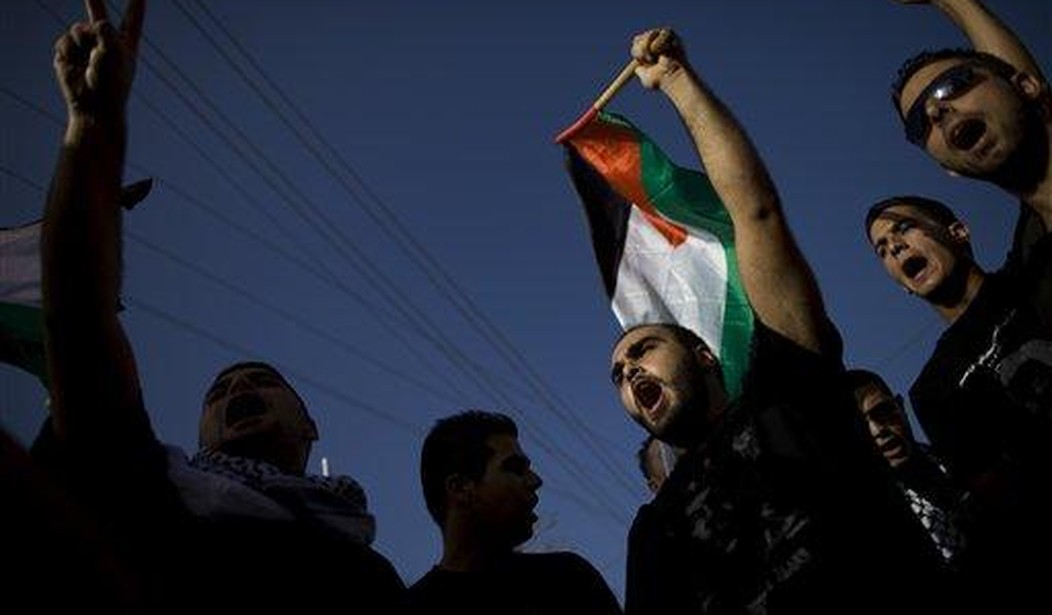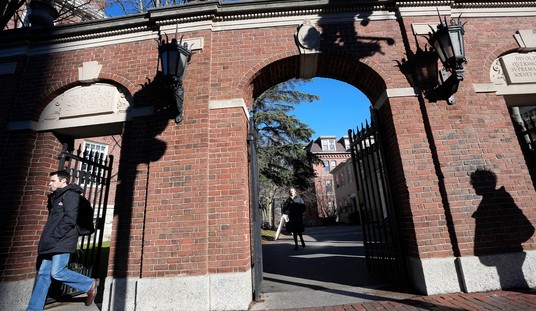The antisemites marching on campuses and in major Western cities demand the genocide of the Jewish people in Israel, between “the river and the sea.” They also have been demanding an intifada against Jews in general. Having gone through the Second Intifada, I wanted to record what it was like.
The first intifada, circa 1989, mostly involved stone-throwing. Jews were killed and wounded. The second intifada, 2000-2006, led to 1,100 dead from suicide bombings, drive-by shootings, ramming attacks, knifings, and stone-throwing at cars. 12,000 people were injured, including this author and his son.
The period of the intifada was one of great uncertainty. Can one go downtown? Is a certain mall safe? We heard from our home several explosions, including the suicide bombing at Sbarro in August of 2001. We went downtown sparingly and generally tried not to take the kids, unless we had to measure shoes or the like.
March of 2002 was the high point of suicide bombings in Israel. Every day seemed to bring another attack and more and more dead and seriously wounded. The biggest bombing was on the first night of Passover, when an Arab waiter at the Park Hotel in Netanya detonated a bomb and killed 30 people and wounded another 140. It was a time of fear. Getting on a bus might be the last act a person makes in this world.
On the March 21, 2002, I left home with our oldest son, who at the time was 7. He had a sore throat, so I figured that I would take him to the doctor and then to my office for the day. It was the first day of Passover vacation and having four young kids running around would make life for my wife a challenge as she cleaned the house and started to prepare food for the holiday. Having one boy with me would make things easier. We spent the day in my lab and left around 4:15 pm. We walked through downtown Jerusalem—Jaffa Street, turning onto King George Street. Every place we passed was the location of a previous attack—a shooting attack near my office that I watched with my business partner from his window. A suicide bombing that took out all of the glass of multiple stores, and then of course Sbarro. In all three attacks, Americans had been killed and/or wounded. As we got about halfway home, I felt this enormous push from behind me. I heard what sounded like the roar of a train, as smoke flew by me on either side. I was propelled about 15 feet forward and fell on my face. When I got up, I saw that my left arm was covered in blood. It had been a bombing! Where was my son, whose hand I was holding only a few seconds earlier?
Recommended
I turned around, and the scene looked like a Kafkaesque still life. My ears were not working so I heard nothing. I saw smoke, bodies, and destroyed store fronts. Where was my son? We had been walking home quietly in the rain, but now at first glance I did not see him. I started to run back to where I had been and I saw a small boy face down on the sidewalk. I also saw a body with a charred face. I assumed that it was the bomber and cursed him. In reality, it was one of three people killed. Two were a young couple coming out of an ultrasound appointment; she died pregnant with twins. I picked up our son and I heard him moaning. I put him on my shoulder and ran with him in the direction I had been thrown. I put him down on the sidewalk and did not have a clue what to do. Some people came and said that they would take care of him. One fellow was a professional dancer who had been an army medic. I ran back to get my bag to call my wife. I told her that we had been in a “pigua”—an attack. Then I closed the phone. Someone started to work on my arm when I saw them loading our son into the first ambulance that arrived. I jumped in and identified myself as the father.
We started driving towards Hadassah Hospital and went right by our house. The phone networks had collapsed by then so there was no way to get a call out. My phone had fallen out of my torn bag and the paramedic’s phone simply could not get a call out. In the ambulance, they put a quick bandage on my left arm. They stripped our son down to his underwear. Other than an abrasion on his chin, everything looked in order. Then the paramedic removed a towel soaked in blood from the back of his head. I wanted to scream.
During the ambulance ride that seemed to take forever, our son went from total quiet to bouts of screaming and flailing and then back to quiet. During one of the quiet periods, the paramedic filled out a quick summary form that they used to show the hospital staff where the injuries were on the body and the status of the patient—stable, unstable, etc. While he was filling out the form, I looked over and saw the black tab—dead. I started to yell and shake the paramedic. “He can’t be dead. He was moving a second ago.” Then he showed me the tab above it—Urgent, Not Stable. We arrived at Hadassah to news cameras, so my wife’s entire family saw us getting out of the ambulance. I was taken to the emergency room, which had been divided into numerous cubicles, one for each incoming injured person. Our boy was taken to the ICU. I was able to make a landline call, and my wife came with her brother and parents as fast as they could. Later, I called my parents in Las Vegas. They had experienced Hitler Youth as children. I could see their ashen faces through the phone. They begged us to move to the US.
A mobile X-ray machine showed a screw stuck in my left wrist. The pain was getting unbearable and I could not move my fingers much. I asked for and received morphine. I would have to wait for the top doctor who was out of town and would require some time to get back to the hospital. When she arrived, we had the first and only laugh for a long, long time. She had operated on the same arm a few months earlier when I put it through a window. She said, “You again!” I said that I liked the service so I came back. Another doctor who knew my story said that I was still under warranty. And with that I went off to surgery around 6:30 pm and woke up after 2 in the morning. My doctor presented me with great pomp the screw taken out of my arm. I had very little information on our boy. They put a shunt in his head to remove blood and cerebrospinal fluid, so as to prevent pressure buildup on the brain. As I was taken to the plastic surgery ward for recovery, with a heater on my arm to make sure that the blood continued to flow in the repaired arteries, my wife went to our son in the pediatric ICU. On my first visit to him the next morning, they brought him out of the medically-induced coma. He immediately seized the shunt and tried to pull it out of his head. They knocked him out until Sunday. When he came to, he was blind and paralyzed on his left side. His first words were, “Mommy, I love you.” The whole room fell into tears.
To be continued...























Join the conversation as a VIP Member